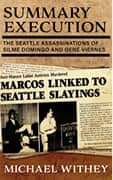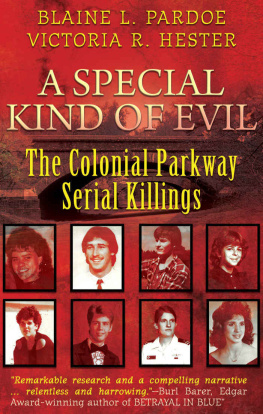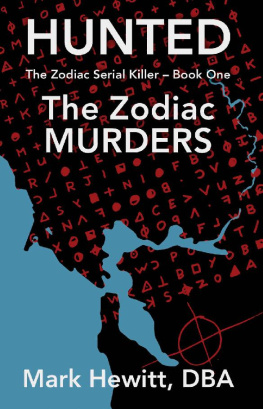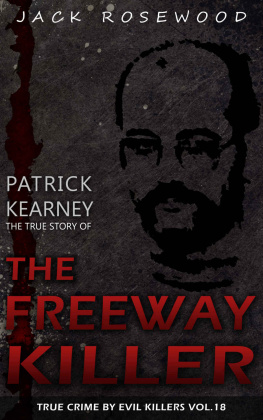TANTAMOUNT published by:
WILDBLUE PRESS
P.O. Box 102440
Denver, Colorado 80250
Publisher Disclaimer: Any opinions, statements of fact or fiction, descriptions, dialogue, and citations found in this book were provided by the author, and are solely those of the author. The publisher makes no claim as to their veracity or accuracy, and assumes no liability for the content.
Copyright 2019 by Blaine Pardoe and Victoria Hester
All rights reserved. No part of this book may be reproduced in any form or by any means without the prior written consent of the Publisher, excepting brief quotes used in reviews.
WILDBLUE PRESS is registered at the U.S. Patent and Trademark Offices.
ISBN 978-1-948239-49-3 Trade Paperback
ISBN 978-1-948239-48-6 eBook
Interior Formatting by Elijah Toten
www.totencreative.com
TANTAMOUNT
Introduction

It is a simple yet deviously sinister document. Cut out of a notebook; it was just six lines, twenty-four words. For almost five decades, it has haunted the families of the victims and taunted the frustrated authorities. The note is the only confirmed voice of the killer of at least seven, potentially more, young women/girls in Washington DC in the early 1970s. Even more strange is that it was not written by the killer personally. The Freeway Phantom made one of his victims, Brenda Woodard, write it before he raped and killed her. He left it in her coat when he pulled her body from his car and left it alongside the highwaywanting authorities to find her and the message he left behind.
this is tantamount to my
insensititivity (sp) to people
especially women.
I will admit the others
when you catch me if you can! (sic)
Free-way Phantom!
The note tells us everything, and yet nothing about the Freeway Phantom serial killer who stalked Washington DC and Prince Georges County, Maryland, for two years. It is a doorway into the mind of the murderer, while at the same time only cracks open the door just enough for us to see a bit of the horror that lies beyond. It is frightening because the killer admits his crimes and accepts the name that the local media had given him. It is also terrifying because he is taunting investigators, laughing at their failures to apprehend him, baiting them to do better. Up until the discovery of the note, investigators and the media only speculated that the victims were related. With this message all doubt was erased. A serial killer was stalking the Washington DC metropolitan area, though it would be years before that term was even invented.
Even more eerie, the killer is making it known that this is a game to him and that he is winning.
This note has misspellings and sloppy punctuation. The fact that it even has punctuation tells us something about the circumstances of its writing. There are corrections that the killer made to Brendas handwriting. You can see where her murderer validated her work like a dominating schoolteacher. There is a correction made on the word insensitivity It was the first and last time the killer reached out to the authorities and to the cities caught in the frightening mayhem the killer ignited. As mysteriously as this serial killer began his reign of terror, he faded into the shadows.
Or did he?
To say that we, as a people, are fascinated with serial killers is an understatement. In the genre of true crime, the books on serial killers regularly outsell the others. Serial killers are the stuff that Hollywood movies and television series are based on. For many people, we can mentally cope with a single murder. Killing multiple, seemingly random people that is something our sane minds cannot fully comprehend. As such, serial murders enthrall us. Serial killing cold cases are the most intriguing of all. Those stories draw you in out of the hope that you may be the person who can see something that the professional investigators missed. It was a matter of time before the Freeway Phantom cases became mainstream.
The investigators themselves often disagree amongst themselves as to which victims are tied to this murderer. Of course it wasnt helped that the media often attributed murders to the Freeway Phantom that were later disproved and their cases closed. Murders in DC were far too commonplace, and the knowledge of what serial killers were and how they operated only served to confuse the investigators even more. With multiple jurisdictions involved, the investigation seemed doomed from the start.
Washington DCs nightmare known as the Freeway Phantom started on April 25, 1971. Of the known victims, or at least those suspected linked to this killer, the last one occurred November 26, 1972. Twenty months, 579 days that this murderer was known to be stalking the children of strife-torn Washington DC. For many residents it was the end of DCs innocence. Children who were allowed to walk alone were told to go with someone and to avoid all strangers. Girls named Denise were even more frightenedsince it appeared he may be targeting them. Everyone was a suspect.
The freeway in question refers to I-295 weaving through the District of Columbia for just over eight miles. It connects I-95 and the beltway that surrounds the capital, I-495. Starting at the edge of the Potomac River, it passes Joint Base Bolling, the Anacostia Naval Station, and along the Anacostia River. Less than a mile of the freeway is in Maryland itself, where it ends, becoming the Baltimore-Washington Parkway, shooting up into the suburbs. Locals refer to the highway as the Anacostia Freeway. In 1971-1972 it was the primary dumping grounds for the Freeway Phantom. It was his road, his domain; its pavement was his jurisdiction. He acted with impunity and seemingly little fear of being seen or identified. Along this roadway he pulled his vehicle over, got out, pulled out his victims bodies, and drove away. Countless people should have seen him but somehow didnt.
All we are left with are the questions. The most obvious of which is who did it? Was it a single killer or was it a pair of murderers? Did the killer really stop and if he did, why? How did he choose his victims? How did he snatch these girls off busy streets without being seen? Where did he take them? What did he do with them when he had secured them? Why did he dump the majority of his victims on I-295, one of the busiest freeways in the city? Why did he suddenly stop depositing his victims in the District of Columbia and start putting them in Maryland? What did he mean in the note when he said he would, admit the others? What others did he reference? Who were the suspects? Why was justice denied these families? There are other questions, dozens of them that demand consideration and answers.
One question rises to the top of all others: Was this a matter of race? If these had been young white girls gone missing, would it have garnered more attention than it did?
Muddying the waters were jailhouse confessions, lost evidence and records, and urban legends that persist to today. At the times of the killings, the nations capital struggled with war protests, Watergate, and haphazard police work in an age before forensics. It seems incredible to us today that a serial killer stalked the streets of Washington DC and it scarcely merits mention. Only a few years out of the 1968 riots after the death of Martin Luther King Jr., Washington DC was not a capital at peace, but one in perpetual turmoil. Race issues, national politics, war and the space race dominated the headlines during the period of the murders. DC was the epicenter for chaos during the Freeway Phantoms reign of terror. He epitomized the violence that was straining under the myriad of tensions in the city.














